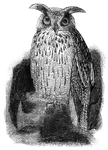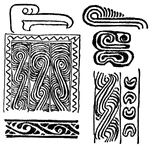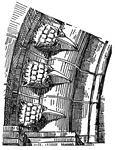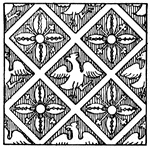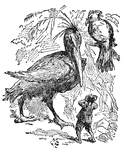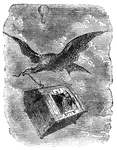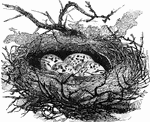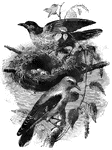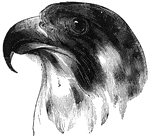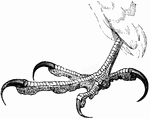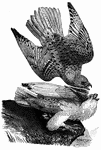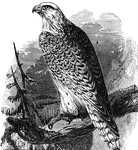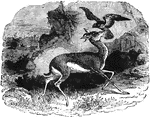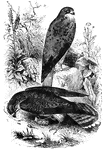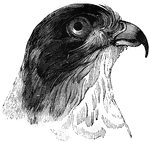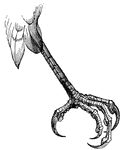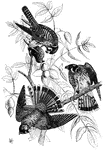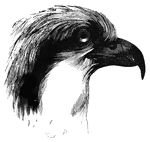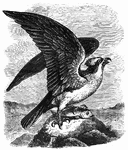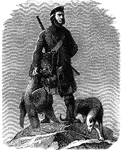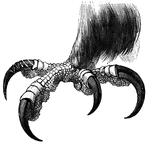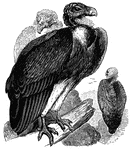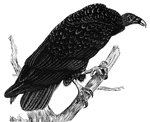
Painted Vulture
The vulture, with widespread wings, symbolizing protection and maternal care, is a frequent and a splendid…

Bird's Point
"View of the fortifications erected by the Federal troops at Bird's Point, MO., opposite Cairo, Ill."—…

Confederate Schooner
"Bird's-eye view of the burning of a Confederate schooner in Quantico or Dumfries Creek, Potomac River,…

Elizabeth
"Elizabeth, Elspeth, Betsy, and Bess, They all went together to seek a bird's nest, They found a bird's…

Camp Douglas
"Bird's-eye view of Camp Douglas, Chicago, Ill., used for the detention of Confederate prisoners in…

Fork-Tailed Kite
"The fork-tailed kite, (N. furcatus) is twenty-five inches long; the wings and tail black;…
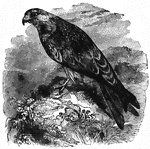
Kite
"Genus Milvus, its length is twenty-six inches; it's color above dark brown; rufous bown below;…
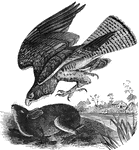
Common Buzzard of Europe
"B. vulgaris is twenty-two inches long, the head is large and the body heavy. Above, the color…

American Marsh Hawk
Also known as the American harrier, the marsh hawk (C. Hudsonius) is nineteen to twenty-one…

Goshawk
"The American goshawk &mdash the black-cap haw of Wilson &mdash A. atricapillus which has been…
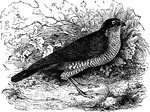
European Sparrowhawk
Resembles the American sparrow-hawk, feeding primarily on small birds and quadrupeds, as well as domesticated…
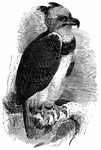
Harpy Eagle
Genus Harpyia, it is one of the largest, most fierce, and powerful eagles. It has a crest of…
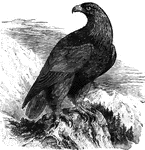
Royal Eagle
Also known as the common eagle of Europe, (A. fulvus) these large eagles nest on the inaccessable…
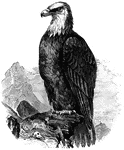
Bald Eagle
Bald (or white-headed) eagle, H. leucocephalus, common along sea-coasts, lakes, and rivers.
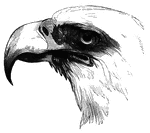
Head of a Bald Eagle
The head of a bald eagle. The distictive white plumage of this area earned it its nickname.
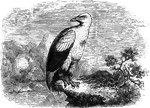
Vulture Hawk
Genus Gypohierax, is about the size of a goose, and is found in Western Africa, particularly…
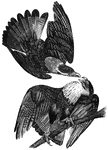
Caracara Eagle
The caracara eagle, genus Caracara found in Cental and South America, as well as portions of…

Lammergeyer
The lammergeyer (Swiss for "lamb-killer") is a member of the vulture family, but has a notably feathered…

Vultures
Genus Vulture, posess keen eyesight and a sense of smell for locating carcasses. Vultures feed…

Brown Vulture
V. cinercus, native to the mountainous regions of Europe. It feeds exclusively on carrion.
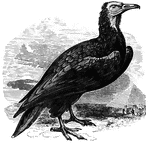
Egyptian Vulture
N. percnopterus, common to Africa, sometimes found in Southern Europe and in Asia. Males and…
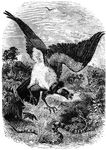
King Vulture
Genus sarcoramphus, a large vulture found in the tropical regions of the Americas, sometimes…
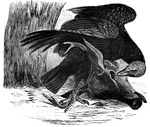
Black Vulture
Genus Coragyps, about the size of a small turkey. This one is feeding on a cow's head.
